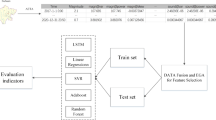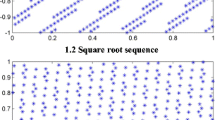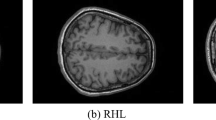Abstract
The occurrence of destructive earthquakes is a small probability event, that is, the seismic samples are extremely imbalanced, which increases the difficulty of earthquake prediction. The existing earthquake prediction methods rarely adopt sample imbalance technology, and the prediction results are not good enough. Therefore, this study proposes a novel immune optimization inspired Numerical Differential Artificial Natural Killer Cell Algorithm (NDANKA) for earthquake prediction. First, based on the signals collected by our developed Acoustic and Electromagnetic Testing All in one system (AETA), historical record and precursor data are combined as the data source of our proposed model; then, the numerical differential artificial-based natural killer cell method is adopted to construct time-series Synthetic Minority Over-sampling Technique; moreover, an artificial antigen presenting cell approach is introduced to predict earthquakes; finally, the stochastic gradient descent method is adopted to optimize the parameters of the proposed algorithm. Through experiments in Sichuan and surroundings, the results demonstrate that the proposed NDANKA outperforms the state-of-the-art earthquake prediction approaches. Meanwhile, a hypothesis testing is accomplished.




Similar content being viewed by others
Data availability
The datasets generated during and/or analysed during the current study are available from the corresponding author on reasonable request.
References
Mami M, Debarati G-S (2020) The Human Cost of Disasters - An overview of the last 20 years 2000–2019. Technical report KSL-86-19, UN office for disaster risk reduction
Wyss M (1991) Evaluation of proposed earthquake precursors. Eos Trans Am Geophys Union 72(38):411–411
Panakkat A, Adeli H (2008) Recent efforts in earthquake prediction (1990–2007). Nat Hazards Rev 9(2):70–80
Banna AL, Taher A, Kaiser MS, Rahman Cho GH (2021) Application of artificial intelligence in predicting earthquakes: state-of-the-art and future challenges. IEEE Access 8(2):192880–192923
Ikram A, Qamar U (2014) A rule-based expert system for earthquake prediction. J Intell Inf Sys 43(2):205–230
Pandit A, Biswal KC (2019) Prediction of earthquake magnitude using adaptive neuro fuzzy inference systems. Earth Sci Inf 12(4):513–524
Asim KM, Moustafa SS, Niaz IA, Elawadi EA, Martnez-Lvarez F (2020) Seismicity analysis and machine learning models for short-term low magnitude seismic activity predictions in cyprus. Soil Dyn Earthq Eng 130:105932
Huang Z, Yang C, Zhou X, Yang S (2019) Energy consumption forecasting for the nonferrous metallurgy industry using hybrid support vector regression with an adaptive state transition algorithm. Cogn Comput 12:357
Zmazek B, Todorovski L, Dzeroski S, Vaupotic J, Kobal I (2003) Application of decision trees to the analysis of soil radon data for earthquake prediction. Appl Radiat Isot Incl Data Instrum Methods Use Agric Ind Med 58(6):697–706
Jiang C, Wei X, Cui X, You D (2009) Application of support vector machine to synthetic earthquake prediction. Earthq Sci 22(3):315–320
Panakkat A, Adeli H (2010) Recurrent neural network for approximate earthquake time and location prediction using multiple seismicity indicators. Comput-Aided Civ Infrastruct Eng 24(4):280–292
Wang Q, Guo Y, Yu L, Li P (2017) Earthquake prediction based on spatio-temporal data mining: an lstm network approach. IEEE Trans Emerg Top Comput 8:148–158
Huang JP, Wang XA, Zhao Y, Xin C, Xiang H (2018) Large earthquake magnitude prediction in Taiwan based on deep learning neural network. Neural Netw World 28(2):149–160
Greensmith J, Aickelin U (2008) The deterministic dendritic cell algorithm. SSRN Electron J
Wu J, Liang Y, Tan C, Zhou W (2019) Method of earthquake prediction based on negative selection. Appl Res Comput 36(4):1097–1100
Gan Y, Liang Y, Tan C, Zhou W, Wu J (2019) Earthquake prediction method based on danger theory. Comput Eng 45(1):278–283
Zhou W, Dong H, Liang Y (2020) The deterministic dendritic cell algorithm with haskell in earthquake magnitude prediction. Earth Sci Inf 13(2):447–457
Fern\(\acute{a}\)ndez-G\(\acute{o}\)mez MJ, Asencio-Cort\(\acute{re}\)s G, Troncoso A, et al (2017) Large earthquake magnitude prediction in chile with imbalanced classifiers and ensemble learning. Appl Sci 7(6): 625
Wang D, Liang Y, Yang X, Dong H, Tan C (2021) A safe zone smote oversampling algorithm used in earthquake prediction based on extreme imbalanced precursor data. Int J Pattern Recognit Artif Intell 35(13):2155013
Bao Z, Zhao J, Huang P, Yong S, Wang X (2021) A deep learning-based electromagnetic signal for earthquake magnitude prediction. Sensors 21(13):4434
Ishimoto M (1936) Observations of earthquakes registered with the microseismograph constructed recently. Bull Earthq Res Inst Univ Tokyo 17
Gutenberg B, Richter C (1942) Earthquake magnitude, intensity, energy, and acceleration (second paper). Bull Seism Soc Am 32(2):105–145
Asencio-Cortés G, Martínez-Álvarez F, Troncoso A, Morales-Esteban A (2017) Medium-large earthquake magnitude prediction in Tokyo with artificial neural networks. Neural Comput Appl 28(5):1043–1055
Bakun WH, Lindh AG (1985) The parkfield, california, prediction experiment 4: 291
Shodiq MN, Kusuma DH, Rifqi MG, Barakbah AR, Harsono T (2019) Adaptive neural fuzzy inference system and automatic clustering for earthquake prediction in Indonesia
Pandit A, Biswal KC (2019) Prediction of earthquake magnitude using adaptive neuro fuzzy inference system. Earth Sci Inf 12(4):513–524
Kuang W, Yuan C, Zhang J (2021) Real-time determination of earthquake focal mechanism via deep learning. Nat Commun 12(1):1–8
Rouet-Leduc B, Hulbert C, Lubbers N, Barros K, Humphreys CJ, Johnson PA (2017) Machine learning predicts laboratory earthquakes. Geophys Res Lett 44(18):9276–9282
Johnson PA, Rouet-Leduc B, Pyrak-Nolte LJ, Beroza GC, Marone CJ, Hulbert C, Howard A, Singer P, Gordeev D, Karaflos D et al (2011) Laboratory earthquake forecasting: a machine learning competition. Proceedings of the national academy of sciences 118(5) (2021)
Ma Z, Mei G (2021) Deep learning for geological hazards analysis: data, models, applications, and opportunities. Earth-Sci Rev 223:103858
Tareen ADK, Asim KM, Kearfott KJ, Rafique M, Nadeem MSA, Iqbal T, Rahman SU (2019) Automated anomalous behaviour detection in soil radon gas prior to earthquakes using computational intelligence techniques. J Environ Radioact 203:48–54
Ulukavak M, Yalçınkaya M, Kayıkçı ET, Öztürk S, Kandemir R, Karslı H (2020) Analysis of ionospheric tec anomalies for global earthquakes during 2000-2019 with respect to earthquake magnitude (mw \(\ge\) 6.0). J Geodyn 135:101721
Baselga S (2020) A combined estimator using tec and b-value for large earthquake prediction. Acta Geodaetica et Geophysica 55(1):63–82
Elmeziane R, Berrada I, Kassou I (2008) A new artificial immune system for the detection of abnormal behaviour 113–122
Laurentys C, Palhares RM, Caminhas WM (2011) A novel artificial immune system for fault behavior detection. Expert Sys Appl 38(6):6957–6966
Fu J, Yang H, Liang Y, Tan C (2012) Bait a trap: introducing natural killer cells to artificial immune system for spyware detection. In: International Conference on Artificial Immune Systems, Springer. pp 125–138
Bejoy BJ, Janakiraman S (2018) An intrusion detection and prevention system using ais an nk cell-based approach. In: International Conference on ISMAC in Computational Vision and Bio-engineering, Springer. pp 883–893
Wang D, Liang Y, Yang X (2022) Nka: a pathogen dose-based natural killer cell algorithm and its application to classification. J Supercomput 78(5):7016–7037
Chawla NV, Bowyer KW, Hall LO, Kegelmeyer WP (2002) Smote: synthetic minority over-sampling technique. J Artif Intell Res 16:321–357
Bunkhumpornpat C, Sinapiromsaran K, Lursinsap C (2012) Dbsmote: density-based synthetic minority over-sampling technique. Appl Intell 36(3):664–684
Wei J, Huang H, Yao L, Hu Y, Fan Q, Huang D (2020) Ni-mwmote: an improving noise-immunity majority weighted minority oversampling technique for imbalanced classification problems. Expert Sys Appl 158:113504
Dogra V, Verma S, Jhanjhi NZ (2022) A comparative analysis of machine learning models for banking news extraction by multiclass classification with imbalanced datasets of financial news: challenges and solutions. Int J Interact Multimed Artif Intell 7(3):1–19
Yi X, Xu Y, Hu Q, Krishnamoorthy S, Li W, Tang Z (2022) Asn-smote: a synthetic minority oversampling method with adaptive qualified synthesizer selection. Complex Intell Sys 21:1–26
Raulet DH, Vance RE, Mcmahon CW (2001) Regulation of the natural killer cell receptor repertoire. Ann Rev Iimmunol 19(1):291
Germain RN (2004) An innately interesting decade of research in immunology. Nat Med 10(12):1307–1320
Lanier LL (2005) Nk cell recognition. Ann Rev Immunol 23(1):225
Zhou W, Liang Y (2021) A new version of the deterministic dendritic cell algorithm based on numerical differential and immune response. Appl Soft Comput 102:107055
Asencio-Cort\(\acute{e}\)s G, Mart\(\acute{i}\)nez-\(\acute{A}\)lvarez F, Morales-Esteban A, Reyes J, Troncoso A (2015) Improving earthquake prediction with principal component analysis: application to Chile. In: International conference on hybrid artificial intelligence systems, HAIS 2015, Springer. pp 393–404
Panakkat A, Adeli H (2007) Neural network models for earthquake magnitude prediction using multiple seismicity indicators. Int J Neural Sys 17(01):13–33
Adeli H, Panakkat A (2009) A probabilistic neural network for earthquake magnitude prediction. Neural Netw 22(7):1018–1024
Panakkat A, Adeli H (2009) Recurrent neural network for approximate earthquake time and location prediction using multiple seismicity indicators. Comput-Aided Civ Infrastruct Eng 24(4):280–292
Acknowledgements
The authors wish to thank NSFC-https://www.nsfc.gov.cn/ for their support through Grant Number 61877045, Fundamental Research Project of Shenzhen Science and Technology Program for their support through Grant Number JCYJ20160428153956266, and Scientific Research Project of Hubei Provincial Department of Education for their support through Grant Number D20191406.
Author information
Authors and Affiliations
Corresponding author
Additional information
Publisher's Note
Springer Nature remains neutral with regard to jurisdictional claims in published maps and institutional affiliations.
Rights and permissions
About this article
Cite this article
Zhou, W., Zhang, K., Ming, Z. et al. Immune optimization inspired artificial natural killer cell earthquake prediction method. J Supercomput 78, 19478–19500 (2022). https://doi.org/10.1007/s11227-022-04618-w
Accepted:
Published:
Issue Date:
DOI: https://doi.org/10.1007/s11227-022-04618-w




